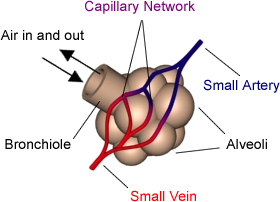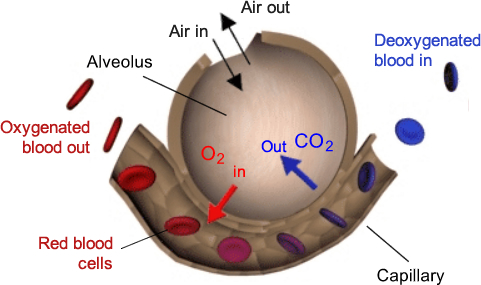Exchange of gases in the Lungs
Breathing is a gas
exchange mechanism. Your Lungs help to
do just that! They contain millions of tiny
air pockets called ALVEOLI (air sacs)
which are adapted to maximise the diffusion of carbon dioxide and oxygen (see diagram
below). Alveoli are good at gas exchange because
they have: In the
alveolus (single air sac) oxygen passes from a high
concentration (loads of oxygen) through the thin wall into the blood
capillary where there is a low concentration (very
little oxygen) . This is called diffusion,
because oxygen is moving from high concentration to low
concentration. When blood returns to lungs it has high
concentration of carbon dioxide, so CO2 diffuses out of the
blood into the alveolus.
Note: Deoxygenated blood appears blue in this diagram for explanation purposes only.
Gas Atmospheric air Exhaled air Change Oxygen, O2 21% 16% -5% Carbon dioxide, CO2 0.04% 4% +4% Nitrogen, N2 78% 79% +1% Others 1% 1% 0%


Inhaled & exhaled air
When compared to atmospheric air, exhaled air contains:
Tags:Diffusion, Lung diffusion, Exchange of gases, Alveoli, Lung cells